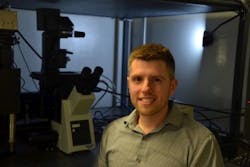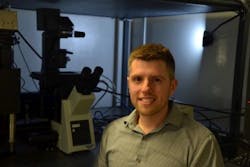Nanosensors track obesity-related disease progression
Recognizing that detecting the accumulation of fat in individual cells is difficult, especially in live organisms, a team of researchers is tackling the problem by using nanotechnology to pinpoint abnormal amounts of fat in live cells. The work could enable detection of the progression of obesity-related diseases.
Related: DNA sequencing reveals genetic forms of obesity, diabetes
Daniel Roxbury, chemical engineering assistant professor at the University of Rhode Island (Kingston, RI), and researchers from Memorial Sloan Kettering Cancer Center and Weill Cornell Graduate School of Medical Sciences (both in New York, NY), found that certain formulations of carbon nanotubes—nanoscopic cylinders of carbon—were ingested by specific types of immune cells, similar to those in the liver and in arteries. The nanosensors detect the amount of fat inside the cells by changing the wavelength of infrared light that they give off.
Because the sensors function in live cells, they enable monitoring of the progression of a disease as well as its reversal when adding an appropriate drug, Roxbury explains.
"The prospect of extending this work to live animals and humans is exciting in the development of new drugs and monitoring disease reversal in patients," Roxbury says. "Moving forward, our lab aims to engineer the most robust nanosensors for these kinds of applications."
Full details of the work appear in the journalACS Nano.

